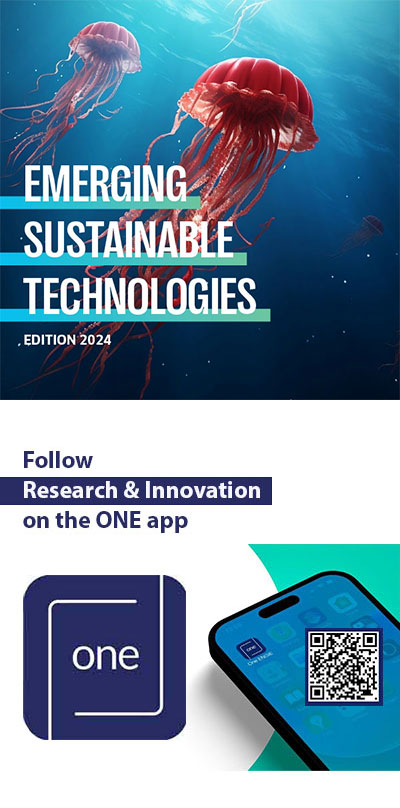


Activities like direct ocean capture can be perceived negatively as an attempt to “tamper with nature”.
The large CO2 sink capacity of oceans has increased interest in technologies that can enhance carbon storage in the ocean by extracting CO2 from ocean water. Hence, removing CO2 from ocean water would indirectly remove CO2 from the air. This approach is called Direct Ocean Capture (DOC) in analogy with Direct Air Capture (DAC) to which it can be seen as an alternative. While DAC is challenging because of the low concentrations of CO2 in the air, DOC benefits from the 125x higher CO2 concentration in ocean water. When dissolved inorganic carbon is removed from ocean water, the decarbonated ocean water will reestablish equilibrium by reabsorbing CO2 from the atmosphere.
Today, 23% of CO2 emissions end up in the ocean where they are mostly stored in the form of bicarbonate and carbonate ions. The concentration of CO2 dissolved as carbonates in ocean water is almost 125 times greater than its atmospheric concentration. Although oceans can capture and store CO2as carbonates on geologic time scales, the anthropogenic CO2 emission rates are too fast for oceans to keep up with and disturb the balance between the different oceanic carbon storage forms. When CO2 reacts with water, it first forms carbonic acid, most of which is then converted into bicarbonate and carbonate ions. Both reactions liberate protons, which is why the rapidly-increasing atmospheric CO2 concentrations lead to ocean acidification. If we go the opposite way, from carbonate back to bicarbonate and from bicarbonate to CO2, protons are consumed. When a chemical reaction involves liberation/ consumption of protons, the reaction equilibrium becomes pH-dependent.
The way in which the dynamic equilibrium of CO2 and its oceanic storage forms bicarbonate/carbonate is governed by pH is shown in the Bjerrum diagram below.
At an average ocean pH of about 8.2, more than 90% of CO2 in ocean water takes the form of bicarbonate. The diagram also shows that increasing the acidity of ocean water will drive the conversion of bicarbonate to CO2 which will be released into the atmosphere as gas. Increasing alkalinity of ocean water, on the other hand, will enhance conversion of bicarbonate to carbonate ion, a less soluble storage form of inorganic carbon that we find mostly in a mineral form in which it contributes to the formation of corals and shells.
In order to recover CO2 from ocean water, direct ocean capture can take advantage of the effect of pH on the balance between the different dissolved inorganic carbon forms. There are 2 routes that can be used:
• Applying an acid pH swing will convert bicarbonate to CO2 which is subsequently stripped from the ocean water using membrane contactors. Upon pH neutralization, the processed ocean water with restored CO2 absorption capacity is sent back to the ocean.
• Applying an alkaline pH swing, as a result of which bicarbonate is converted to carbonate which then can be precipitated in the mineral form of CaCO3/MgCO3, CO2 can be recovered from these mineral forms by heating.
The chemicals enabling the pH swing required for the desorption can be produced in situ by electrochemical processes that convert the water and salts present in seawater to an acid and a base stream.
• CO2 captured from the atmosphere with DOC can be considered “non-fossil carbon” and be used to produce chemicals, materials, and fuels using renewable energy. Thus, DOC holds promise to not only provide a pathway towards a negative emission technology, but also to create a new carbon economy that is not based on fossil resources.
• CO2 (as bicarbonate) in the ocean is 125x more concentrated than in the atmosphere. Consequently, the projected footprint of direct ocean capture technologies is considerably lower than of direct air capture.
• The removal of ocean-dissolved CO2 could counter the trend of ocean acidification and potentially benefit marine ecology.
• Synergies with desalination / brine mining. The effluent from a water desalination plant’, nowadays considered as waste, can be turned into a valuable resource. Desalination brines can hold up to 2x times more CO2 than average seawater and processing this effluent for CO2 recovery allows a further reduction of the footprint. The decarbonated effluent (or brine), rich in minerals and critical raw materials, is an ideal substrate for seawater mining.
• Based on the concentration of Dissolved Inorganic Carbon in seawater (2mM), a considerable amount of about 10,000-15,000 m³ seawater needs to be processed for each ton of CO2 sequestered. When starting from desalination effluent: about 5,500-7,500 m3/tCO2
A strong connection to oceans and uncertainties surrounding these technologies challenge their acceptability. Activities like direct ocean capture can be perceived negatively as an attempt to “tamper with nature”. This perception is not related to any specific level of knowledge related to oceans. Despite the lack of real case studies to manage social science surveys, scientists have identified various sources of controversy related to direct ocean capture, based on the analysis of analogous technologies.
Lay populations stress the uncertainties related to impacts of these types of technologies and potential associated risks. In addition, they stress the difficulties of mitigating risk in an open space like oceans.
Although implementing these types of technologies may have global benefits on climate change mitigation they can nevertheless potentially disturb local ecosystems.
Read more and discover more innovative sustainable technologies, their advantages and their challenges in ENGIE’s 2024 report on Sustainable Emerging Technologies: